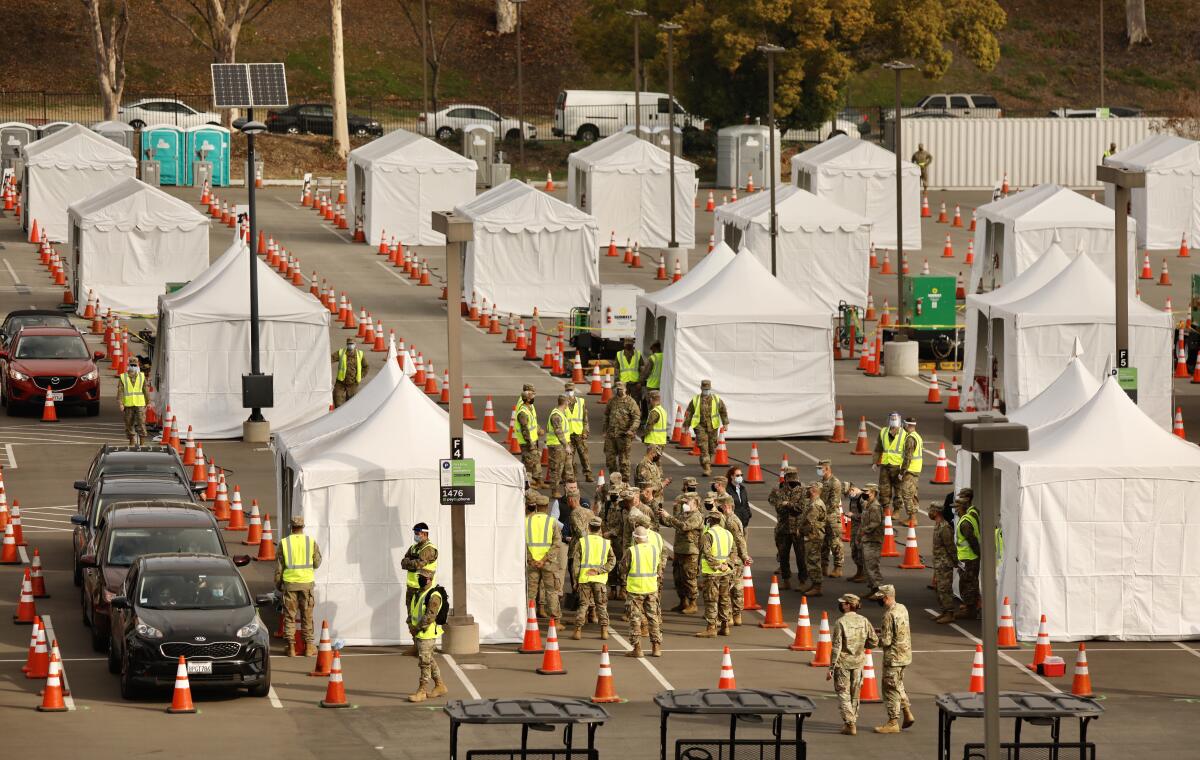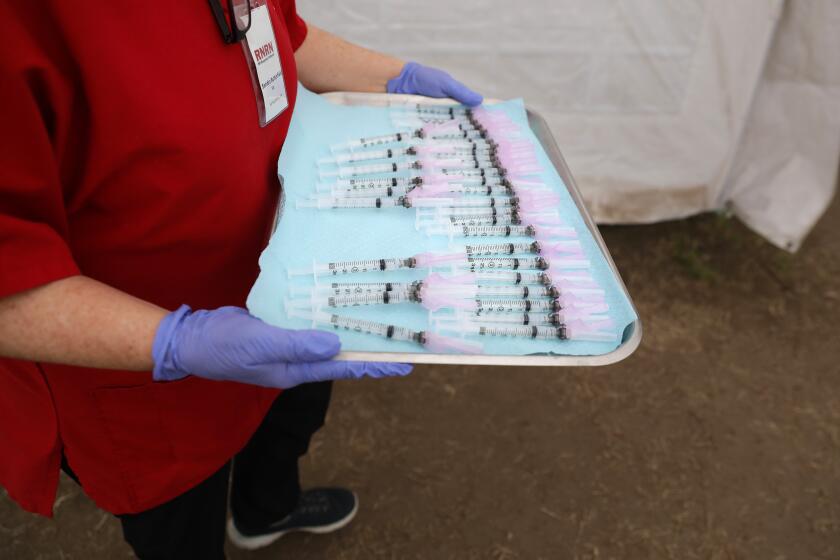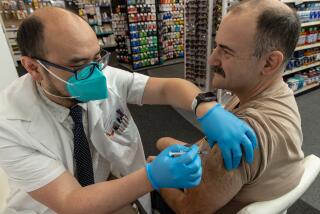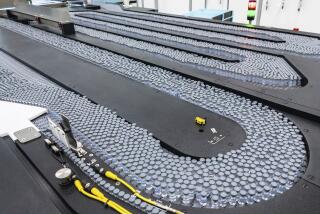Cal State L.A. vaccination site could close next month, officials say

State and federal officials plan to withdraw from a COVID-19 vaccination super site at Cal State Los Angeles on April 11, four days before the Golden State will begin vaccinating all residents ages 16 and older.
Unless officials in Los Angeles County find a way to operate the site themselves, residents — particularly the elderly, those without cars, and residents of hard-to-reach communities — could have one less way to get vaccinated at a time when the state is trying to ensure equitable access to the shots.
Officials with the Federal Emergency Management Agency and the California Office of Emergency Services said Friday that they were nearing the end of an “eight-week mission” at the site and its sister location at the Oakland Coliseum, where a total of nearly 500,000 doses were administered in five weeks. When the Cal State L.A. location opened in mid-February, officials said the site was temporary but hoped it would stay open until August.
Health officials and Los Angeles Mayor Eric Garcetti said Friday that they are exploring multiple options to keep the Cal State L.A. site open. That could include allowing the city of Los Angeles or the county’s public health department to run it, or splitting it into several smaller community clinics, said Dr. Paul Simon, the department’s chief science officer.
“We recognize it’s a really important site,” Simon said, adding that more information would be available within two weeks. “We in no way want to scale back vaccination infrastructure.”
The two sites helped boost California’s vaccination rate because their doses came directly from the federal government, rather than from the state’s limited allocation. The sites, staffed by the National Guard, also supported pop-up vaccination clinics at local churches, schools and community centers as a way to reach people in high-need ZIP Codes.
The Cal State L.A. site has a drive-through option and accommodates walk-up appointments, and operates a shuttle to transport patients without cars from a nearby transit stop.
Los Angeles County Supervisor Hilda Solis, whose district includes the Cal State L.A. area, urged President Biden in a letter on Friday to keep the site open through June, in part to help the president reach his goal of administering 200 million vaccines in his first 100 days.
“As we expand eligibility to millions more residents in the county, this support will be more essential than ever to provide vaccine access to the Black and Latinx communities” served by the site and its satellite locations, Solis wrote.
Andrea Garcia, a representative for Garcetti, said the mayor’s office is “in conversations with county, state and federal authorities on how to maintain vaccination operations in this community.”
“Whatever the outcome, we hope that the federal government continues to support direct FEMA vaccine allocation to this site,” Garcia said.
Nearly two-thirds of the vaccines at Cal State L.A. and the Oakland Coliseum were distributed to “targeted underserved communities and people of color,” according to a prepared statement. CalOES spokesman Brian Ferguson said that running the Cal State L.A. site requires about 1,500 staff and costs $10 million per week.
The sites outpaced their initial expectation of each administering 6,000 vaccines per day and were able to hit 7,500 per day on a regular basis, officials said.
California is dramatically expanding the eligibility for COVID-19 vaccines, offering the shots to virtually all residents 16 and over by April 15.
“We could not be more pleased with the success of these sites or the partnership we have built with our federal partners,” CalOES Director Mark Ghilarducci said in the statement.
Still, state officials alluded to wanting to continue operations and suggested that federal officials decided to not extend the pilot program beyond eight weeks.
“Without the additional vaccines and the financial support, we as CalOES and FEMA do not have a way to move forward,” said Ferguson, the CalOES spokesman. He said the state and federal governments would be open to helping local officials to “reutilize the site after our work concludes.”
FEMA spokeswoman Veronica Verde said the state will work with local officials to finalize a transition plan for the site, but could not say whether there would be a period after April 11 when the site would be closed.
Since Feb. 11, FEMA has spent $823 million to support California vaccination efforts, including reimbursement for the cost of medical and support staffs, personal protective equipment, facility costs, and the expense of handling, transporting and administering vaccines, she said.
The Cal State L.A. site will begin administering the Johnson & Johnson vaccine on April 1. The one-dose regimen will ensure that every patient who has visited the site is fully inoculated by the time FEMA and CalOES leave, Ferguson said.
The Cal State L.A. site also serves as the base of operations for mobile vaccination clinics that have been moving through East L.A. and South L.A. in an effort to improve vaccination rates in areas hit hardest by the pandemic.
The mobile sites have included churches in Inglewood, South L.A., Boyle Heights and Hawaiian Gardens as well as community centers in Baldwin Hills, Maywood and East L.A. More than 24,000 doses have been administered at the mobile units in the Los Angeles area, while at least 26,000 shots were given at mobile sites in the Oakland area.
Times staff writer Colleen Shalby contributed to this report.
More to Read
Sign up for Essential California
The most important California stories and recommendations in your inbox every morning.
You may occasionally receive promotional content from the Los Angeles Times.













